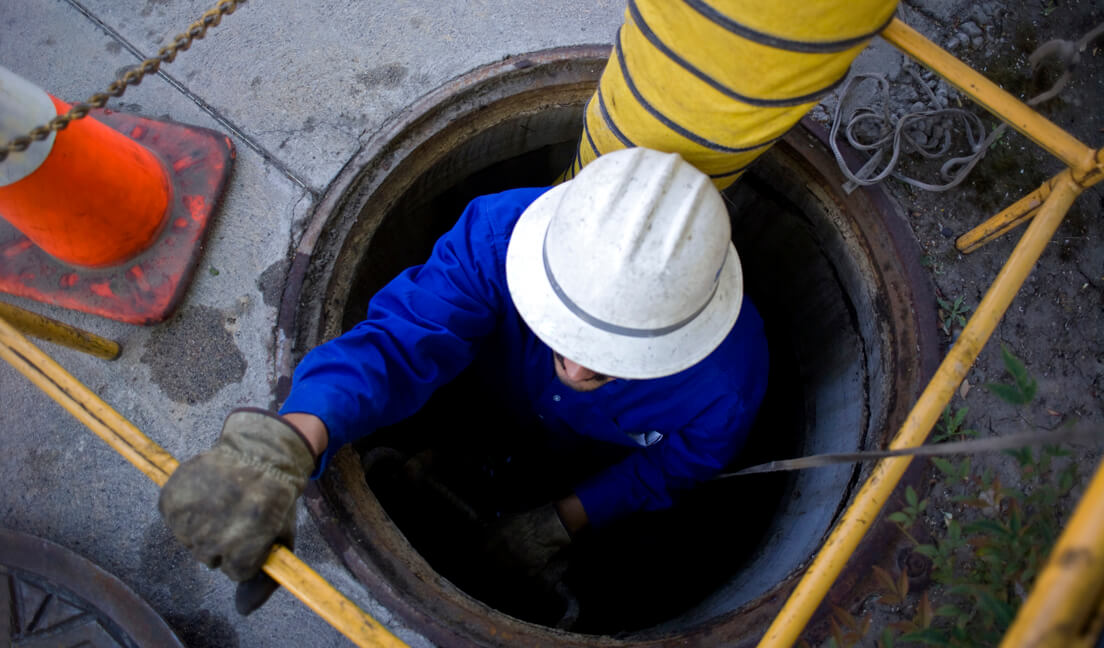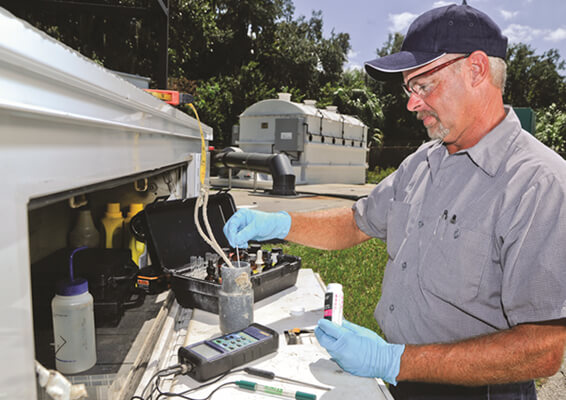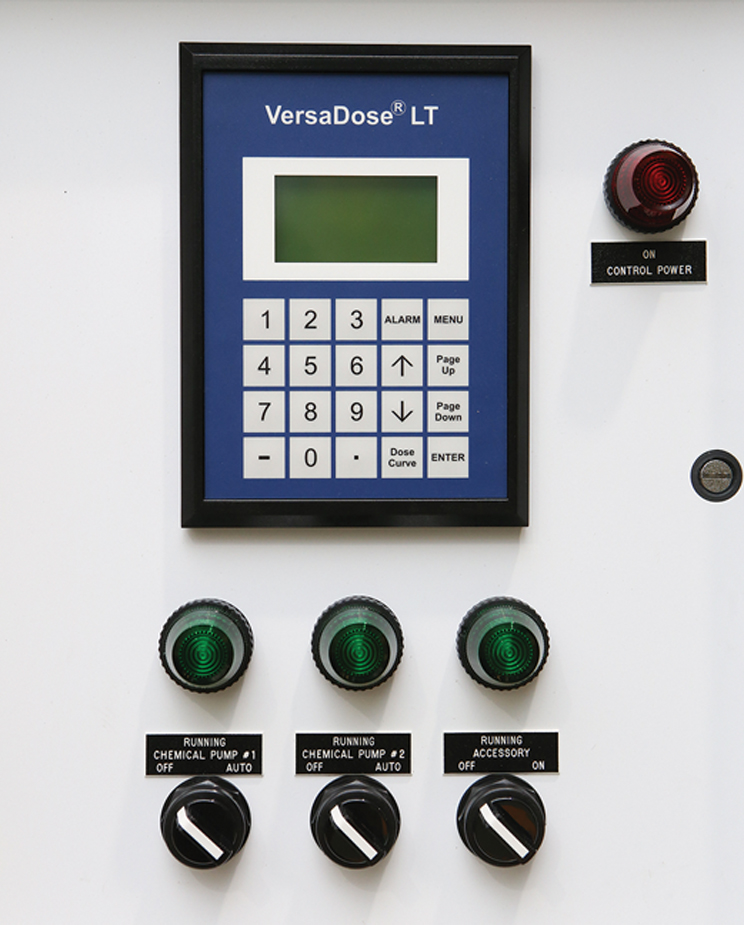Excess levels of hydrogen sulfide in sewer systems can lead to odor complaints, dangerous conditions for personnel (see H2S exposure chart below) and rapid corrosion of infrastructure. Evoqua can help you select the right H2S treatment system to meet your specific application needs for removal and control.
How is Hydrogen Sulfide formed?
Hydrogen sulfide gas (H2S) is formed by naturally occurring sulfate-reducing bacteria (SRB) present in the wastewater. The SRB require an oxygen source to respirate and, as a result, they extract oxygen from sulfate ions (SO42-) and release sulfide ions (S2-) as a byproduct.
Hydrogen sulfide formation is favored in acidic conditions, in which H+ ions combine with S2- to form dissolved H2S. This dissolved H2S can be liberated into the surrounding air under turbulent conditions and when there is decreased solubility in water due to high temperatures or low pH. This often results in a pungent rotten egg odor and complaints from the surrounding community.
Hydrogen sulfide can create hazardous working conditions

What are Hydrogen Sulfide Health Hazards?
High concentrations of H2S in wet-wells and manholes can create hazardous working conditions. With an OSHA permissible exposure limit of 10 ppm time weighted average over an eight-hour period and short-term exposure limit of 15ppm for 15 minutes, hydrogen sulfide removal is critical to ensure safety.
H2S Exposure Chart
| Concentration (ppm) | Symptoms / Effects |
|---|---|
| 0.00011-0.00033 | Typical background concentrations |
| 0.01-1.5 | Odor threshold (when rotten egg smell is first noticeable to some). Odor becomes more offensive at 3-5 ppm. Above 30 ppm, odor described as sweet or sickeningly sweet. |
| 2-5 | Prolonged exposure may cause nausea, tearing of the eyes, headaches or loss of sleep. Airway problems (bronchial constriction) in some asthma patients. |
| 20 | Possible fatigue, loss of appetite, headache, irritability, poor memory, dizziness. |
| 50-100 | Slight conjunctivitis ("gas eye") and respiratory tract irritation after 1 hour. May cause digestive upset and loss of appetite. |
| 100 | Loss of smell (olfactory fatigue or paralysis). |
| 200-300 | Marked conjunctivitis and respiratory tract irritation after 1 hour. Pulmonary edema may occur from prolonged exposure. |
How does Hydrogen Sulfide cause Corrosion?
Not only is hydrogen sulfide toxic, but it can also accelerate corrosion in sewer collection systems. When hydrogen sulfide is released into the air, it comes into contact with bacteria, known as Acidithiobacillus. The bacteria consume the hydrogen sulfide and convert it into sulfuric acid (H2SO4). The resulting sulfuric acid causes corrosion damage, eating through iron, concrete, copper and other metals. This can lead to dangerous leaks and costly repairs.

Hydrogen Sulfide Treatment Systems
Effective H2S treatment can create a safer environment for workers and the community, eliminating odor complaints and prolonging the life of infrastructure. Evoqua offers a broad range of industry leading treatment solutions to prevent and remove hydrogen sulfide in the collection system and at the treatment plant. Our full-service programs provide 24/7 remote monitoring with real-time visibility and dosing control for maximum efficiency and performance.





